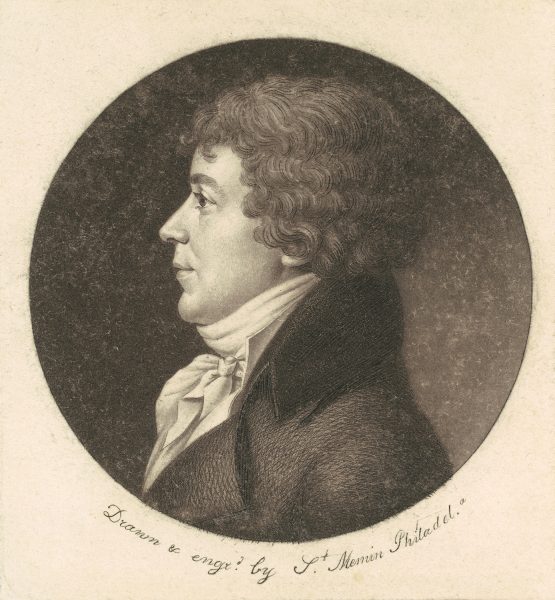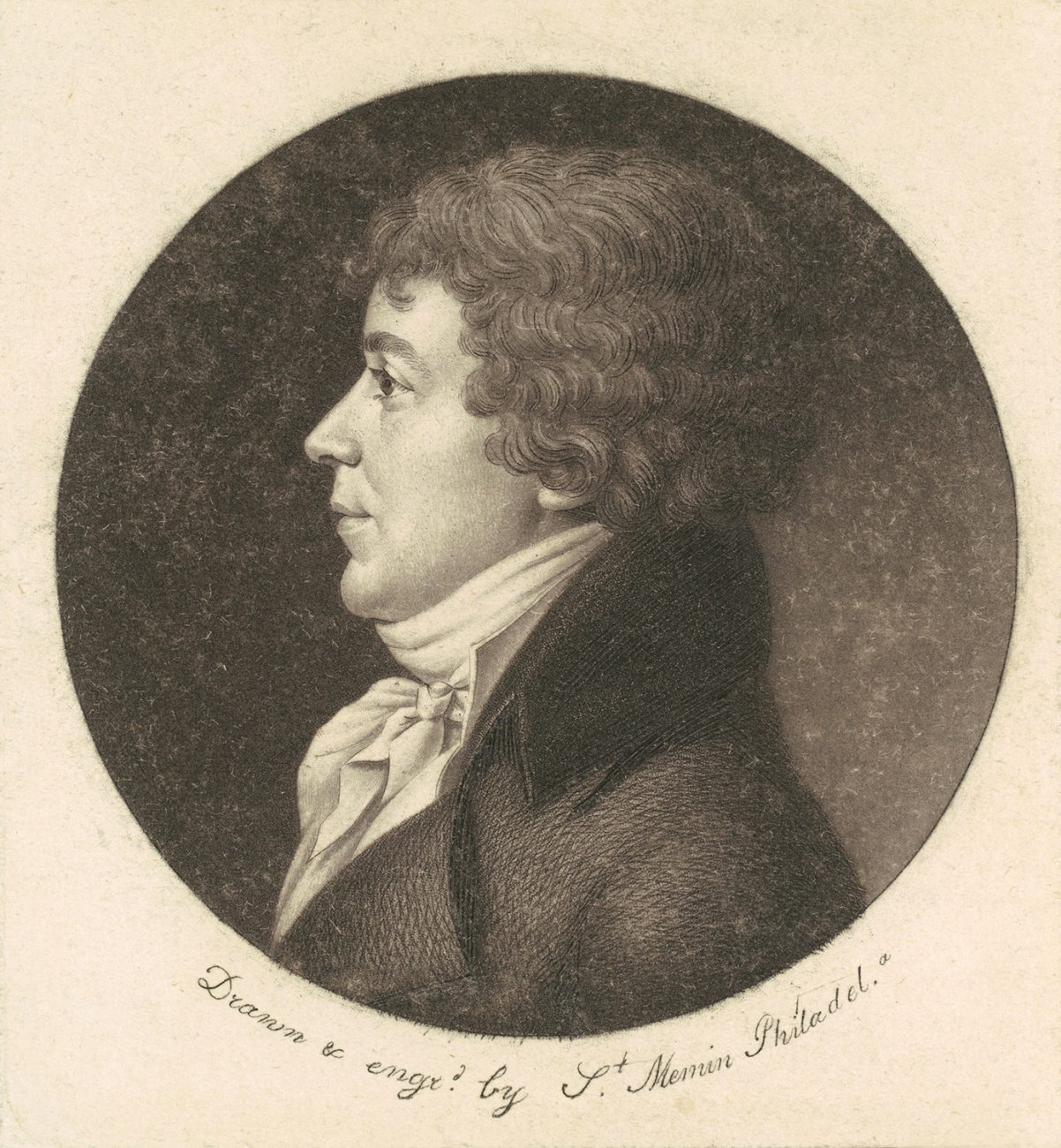Jean-Simon Chaudron
Jean-Simon Chaudron (1758-1846), poet, silversmith, and orator, was one of the founders of the ill-fated Vine and Olive Colony near Demopolis. He spent the final quarter-century of his life in Mobile.
Chaudron was born on October 28, 1758, at Vignery in the Champagne province of France. Raised by an uncle and an aunt, he was apprenticed to a silversmith in Switzerland before returning to France. Chaudron had a lifelong association with and dedication to Freemasonry. Opinions differ on whether he was an actual or merely an honorary member of the celebrated Neuf Soeurs (Nine Sisters) Masonic lodge in Paris, of which Benjamin Franklin was reportedly a member. In 1784, he migrated to Haiti, then a French colony, and in 1791 married Jeanne Geneviève Mélanie Stollenwerk, a planter's daughter. They left for Philadelphia at the outbreak of revolution in Haiti in 1793. In America, Chaudron's silversmith's shop prospered. The silver work, made mostly by Bavarian émigré Anthony Rasch, remains valued today, and some pieces reside in museums. He bought land and had his portrait painted by renowned artist Rembrandt Peale. Chaudron also edited the newspaper L'Abeille Americaine (The American Bee), in which he published several articles promoting the settlement of French exiles in Alabama; and became first Orator and then Master of Philadelphia's Masonic Lodge No. 73.
The best known of Chaudron's writing was his "Funeral Oration on Brother George Washington," a eulogy to fellow Mason and first U.S. president delivered in 1800. Chaudron was more at home with verse, however. His poems are notable partly for their intense patriotism toward both France and the United States. In a number of chauvinistic poems loaded with classical allusions and comparisons, Chaudron lauds French emperor Napoleon Bonaparte as much as he praises Washington, Thomas Jefferson, and possible acquaintance Benjamin Franklin, while denouncing the British. Dedicated to egalitarianism, Chaudron deplored slavery. His verse also reflected his hatred of the privileged position claimed by monarchs and priests.
The Chaudron family ultimately bought 880 acres of land that the U.S. Congress allocated in Alabama to French exiles in 1817 as part of the unsuccessful Vine and Olive Colony centered on Demopolis. In a poem on the Vine and Olive Colony, "Le Chênê et le Laurier," he urged cooperation between expatriates of different classes; farmers and military veterans, he asserted, had much to offer one another. Chaudron soon gave up farming. Sight problems, possibly cataracts, prompted him to move to Mobile, where he entertained the visiting Marquis de Lafayette in 1825.
Chaudron died in Mobile on October 28, 1846, and is buried in the Church Street Graveyard along with his wife.
Further Reading
- Blaufarb, Rafe. Bonapartists in the Borderlands: French Exiles and Refugees on the Gulf Coast, 1815-1835. Tuscaloosa: University of Alabama Press, 2005.
- Chaudron, Jean-Simon. Poésies Choisies de Jean-Simon Chaudron suivies de l'Oraison Funèbre de Washington. Paris: Impr. de E.-B. Delanchy, 1841.
- Smith, Harriet. "Jean Simon Chaudron, The Blind Poet of the Canebrakes, 1758-1846." Bulletin de l'Institut Francais de Washington 4 (1954): 111-119.





